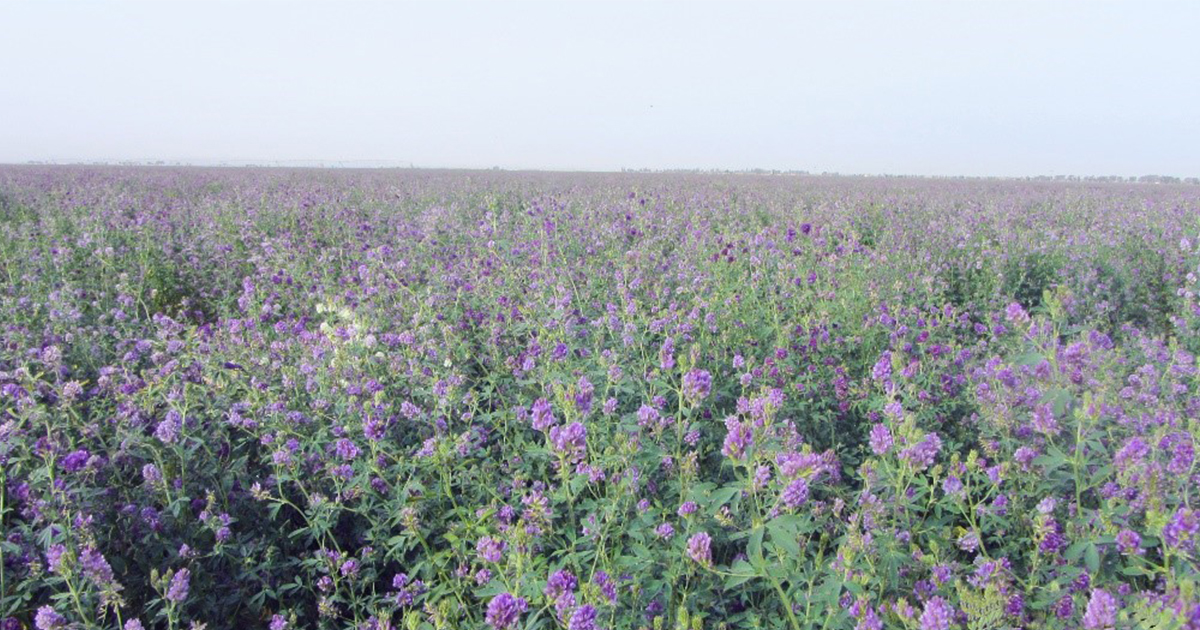Forage Breeding and Cultivation
A special issue of Agriculture (ISSN 2077-0472). This special issue belongs to the section "Crop Production".
Deadline for manuscript submissions: 25 June 2024 | Viewed by 8422

Special Issue Editors
Interests: alfalfa; forage breeding; abiotic stress; molecular mechanisms; genome biology; genomic selection
Interests: forage breeding; molecular mechanisms; abiotic stress; plant development
Special Issue Information
Dear Colleagues,
Forage is the basis for the production of livestock and poultry, especially herbivorous livestock. Forage contains not only the nutrients necessary for livestock, but also crude fiber, which is particularly important for maintaining ruminant livestock health and cannot be replaced by grain and other feeds. Forage yield has dramatically improved due to the application of new biotechnology and breeding methodologies. However, global meat and milk consumption is rapidly increasing, leading to urgent demand for forage supplies. Therefore, breeding high-yield and stress-tolerant varieties and improving cultivation technologies are crucial for forage yield improvement. Traditional hybrid breeding and domestication are fundamental forage breeding methods. Advanced breeding methods including molecular marker-assisted selection and genomic modification could dramatically shorten the breeding cycle. Efficient fertilization technology and irrigation systems are critical for the improvement of forage productivity.
This Special Issue aims to highlight impactful research and commentaries focusing on attempts to breed superior forage varieties and develop efficient cultivation technologies. This Issue welcomes studies on forage breeding (including domestication, genomic selection, genomic modification, gene editing, and gene functional mechanisms) and cultivation (including fertilization, nutrient utilization, and irrigation systems). In addition, we encourage inter- and trans-disciplinary studies (e.g., agricultural sciences, breeding sciences, biology, microbiology, and bioinformatics), as well as those incorporating other crop production methods into forage breeding and cultivation. This Special Issue invites authors to submit all types of articles, including original research, opinions, and reviews.
Dr. Ruicai Long
Dr. Xiao Li
Dr. Hao Sun
Guest Editors
Manuscript Submission Information
Manuscripts should be submitted online at www.mdpi.com by registering and logging in to this website. Once you are registered, click here to go to the submission form. Manuscripts can be submitted until the deadline. All submissions that pass pre-check are peer-reviewed. Accepted papers will be published continuously in the journal (as soon as accepted) and will be listed together on the special issue website. Research articles, review articles as well as short communications are invited. For planned papers, a title and short abstract (about 100 words) can be sent to the Editorial Office for announcement on this website.
Submitted manuscripts should not have been published previously, nor be under consideration for publication elsewhere (except conference proceedings papers). All manuscripts are thoroughly refereed through a single-blind peer-review process. A guide for authors and other relevant information for submission of manuscripts is available on the Instructions for Authors page. Agriculture is an international peer-reviewed open access monthly journal published by MDPI.
Please visit the Instructions for Authors page before submitting a manuscript. The Article Processing Charge (APC) for publication in this open access journal is 2600 CHF (Swiss Francs). Submitted papers should be well formatted and use good English. Authors may use MDPI's English editing service prior to publication or during author revisions.
Keywords
- forage breeding
- phenotype
- genotype
- genomic selection
- domestication and improvement
- fertilization
- nutrient utilization
- irrigation systems
- biological yield
Planned Papers
The below list represents only planned manuscripts. Some of these manuscripts have not been received by the Editorial Office yet. Papers submitted to MDPI journals are subject to peer-review.
Title: A genome-wide study of lipoxygenase gene family in Medicago truncatula and Medicago sativa reveals MtLOX24 participates in methyl jasmonate (MeJA) stress response
Authors: Lei Xu, Yajiao Liu, Bilig Sod, Mingna Li, Qingchuan Yang, Ruicai Long
Affiliation: Institute of Animal Sciences, Chinese Academy of Agricultural Sciences







